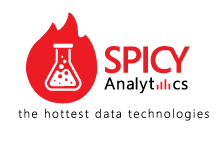PATIENT CHARACTERISTICS, PATIENT FLOW ANALYSIS
Sales trends at market and product level, can be examined if we identify physicians’ treatment and prescription habits as well as the characteristics of patients and doctors. The analysis of certain variables (length of the therapy, persistence, patient compliance, switches between different therapies, segmentation between professions and patients) enables us to design the right messages of marketing and sales strategies..
The examination of patient flows regarding different brands and therapies and switch analyses have the following benefits:
- Market processes and structures become transparent
- It is easy to develop the appropriate communications strategy
- Potential competitors can be identified and growth potential can be determined
PROMOTION-SENSITIVITY AND AREA ALLOCATION
The method to optimize the achievable profit in healthcare is to create a medical representative network and develop a visit strategy that fit the different groups of professionals and geographical areas.
In addition to descriptive statistics, various group forming methods and determinant time series analyses help us describe market dynamics and manage any missing data. The application of non-linear statistical methods enables us to examine the relationship between investments and sales performance. Such analyses provide us with the following information:
- Promotion-sensitivity of the product
- Optimal size and strategy of the medical representative network (FTE, frequency and coverage)
- Finding the most efficient geographic distribution
TARGETING BASED ON THE PHYSICIAN'S POTENTIAL
One of the most complex tasks of medical representatives is to select the right medical panel and classify them into various categories from the visits’ point of view. When sales force plans are developed the potential-based targeting of physicians (pharmacies) contributes to a more efficient resource allocation.
Potential estimation is based on a regression model of 85-90 percent reliability, using the following variables: factual prescription data, characteristics of the given physician such as speciality, demographic features, consulting-hours, small region characteristics, etc. Prescription potentials – for all the physicians – are calculated by projecting the results of the model. Segments are created along the concentration curve prepared from actual prescriptions or estimated potentials.
PHARMACY POTENTIAL
The sales potential of pharmacies is key information for pharmaceutical companies. Models built on pharmacies with known revenues enable us to estimate the potential of some or all of the Hungarian pharmacies, focusing on markets that are relevant for the client. The result is a pharmacy segment classification that will rank the analysed pharmacies in terms of their sales potentials (typically A-E category based on revenue concentration).
PHARMACY EVALUATION SYSTEM (PES)
PES is an analytical CRM-system, a decision supporting tool to be used for client evaluation. PES facilitates decision making with interactive modelling, estimation of the potential turnover and the up-to-date assessment of the risk of non-payment by pharmacies.

